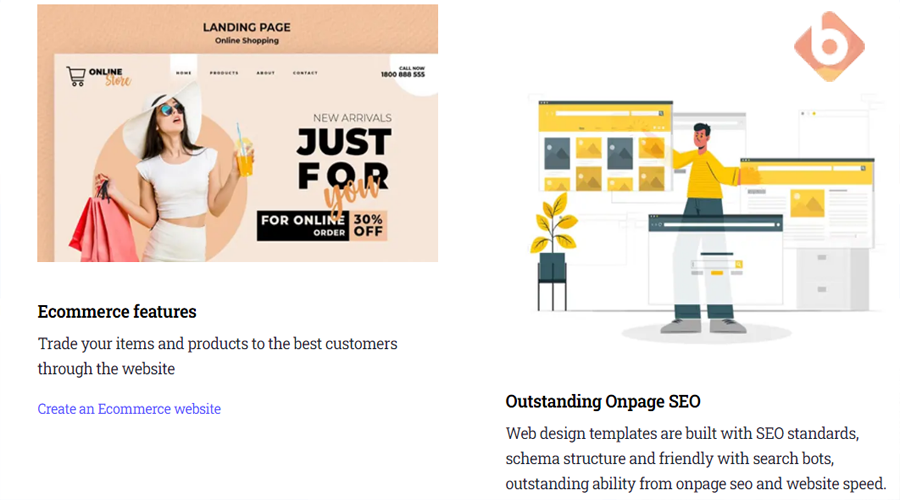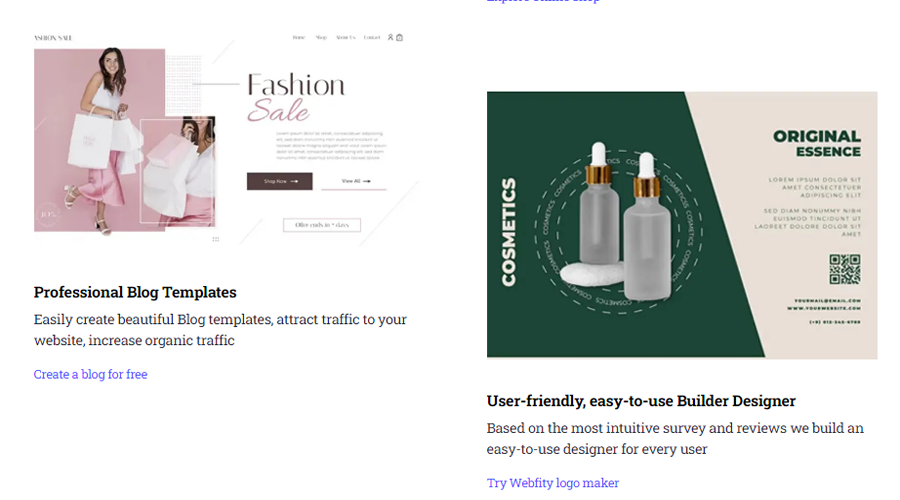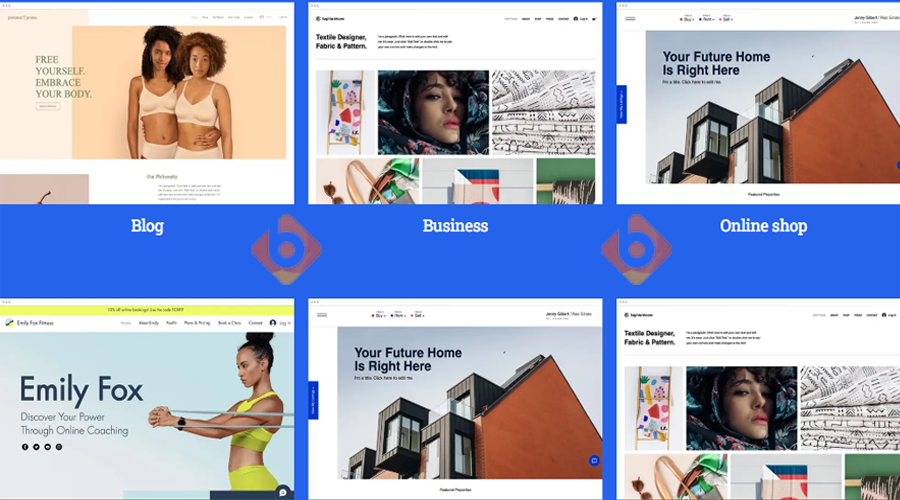Now that you know the key difference between a homepage and a landing page, you might be wondering how to create an effective homepage and landing page for your website. Here are some tips and best practices to help you out.
How to Create an Effective Homepage
An effective homepage should:
- Have a clear and catchy headline that summarizes your brand’s mission and value proposition
- Have a subheadline that elaborates on your headline and provides more details
- Have a hero image or video that showcases your brand’s personality and benefits
- Have a navigation menu that allows visitors to access other pages on your website
- Have a section that highlights the main features and benefits of your products or services
- Have a section that showcases social proof, such as testimonials, reviews, awards, or logos of clients or partners
- Have a section that provides additional information or resources, such as blog posts, ebooks, webinars, or case studies
- Have multiple CTAs that direct visitors to different offers or actions.

Some examples of effective homepages are:
- Airbnb: Airbnb’s homepage has a clear and catchy headline that communicates its value proposition: “Find adventures nearby or in faraway places and access unique homes, experiences, and places around the world.” It also has a subheadline that provides more details: “Unforgettable trips start with Airbnb. Find adventures nearby or in faraway places and access unique homes, experiences, and places around the world.” It also has a hero image that showcases its personality and benefits: a beautiful scenery of a lake and mountains with a cozy cabin. It also has a navigation menu that allows visitors to explore different categories of homes, experiences, and destinations. It also has a section that highlights the main features and benefits of its products: “Book unique places to stay and things to do.” It also has a section that showcases social proof: “Over 10 million guests have traveled with Airbnb hosts.” It also has a section that provides additional information or resources: “Introducing Airbnb Adventures.” It also has multiple CTAs that direct visitors to different offers or actions: “Start your search”, “Become a host”, “Explore Airbnb Adventures”.
- Spotify: Spotify’s homepage has a clear and catchy headline that communicates its value proposition: “Music for everyone.” It also has a subheadline that provides more details: “Millions of songs. No credit card needed.” It also has a hero image that showcases its personality and benefits: a colorful collage of different artists and genres. It also has a navigation menu that allows visitors to access other pages on its website: “Premium”, “Help”, “Download”, “Sign up”, “Log in”. It also has a section that highlights the main features and benefits of its products: “Spotify Free”, “Spotify Premium”. It also has a section that showcases social proof: “Get inspired with personal recommendations, and readymade playlists for just about everything.” It also has a section that provides additional information or resources: “Listen everywhere”, “Enjoy amazing sound quality”, “No ads”, “Download music & listen offline”. It also has multiple CTAs that direct visitors to different offers or actions: “Get Spotify Free”, “Get Spotify Premium”.
A homepage and a landing page are two types of web pages that serve different purposes and audiences. A homepage is the main page of a website that provides an overview of the brand, products, services, and value proposition. A landing page is a standalone page that is designed to persuade visitors to take a specific action, such as signing up for a newsletter, downloading an ebook, or buying a product.
The key difference between a homepage and a landing page lies in their goals, content, and design. Let’s look at each of these aspects in more detail.
Goals
A homepage has multiple goals, such as:
- Building trust and credibility with visitors
- Educating visitors about the brand and its offerings
- Navigating visitors to other pages on the website
- Encouraging visitors to explore more content and resources
- Generating leads and conversions through various calls-to-action (CTAs)

A landing page has a single goal, which is:
- Converting visitors into leads or customers through a clear and compelling CTA
A homepage is meant to be a general introduction to the brand and its value proposition, while a landing page is meant to be a specific and focused offer that matches the visitor’s intent and needs.
Content
A homepage has diverse and dynamic content, such as:
- A headline that summarizes the brand’s mission and value proposition
- A subheadline that elaborates on the headline and provides more details
- A hero image or video that showcases the brand’s personality and benefits
- A navigation menu that allows visitors to access other pages on the website
- A section that highlights the main features and benefits of the products or services
- A section that showcases social proof, such as testimonials, reviews, awards, or logos of clients or partners
- A section that provides additional information or resources, such as blog posts, ebooks, webinars, or case studies
- Multiple CTAs that direct visitors to different offers or actions
A landing page has concise and specific content, such as:
- A headline that captures the visitor’s attention and communicates the value proposition of the offer
- A subheadline that reinforces the headline and provides more details
- An image or video that illustrates the offer and its benefits
- A form that collects the visitor’s information in exchange for the offer
- A CTA button that urges the visitor to complete the form and claim the offer
- A section that lists the main features and benefits of the offer
- A section that provides social proof, such as testimonials, reviews, ratings, or logos of clients or partners
- A section that addresses common objections or questions that might prevent the visitor from taking action
A homepage is meant to be informative and engaging, while a landing page is meant to be persuasive and actionable.
Design
A homepage has a complex and flexible design, such as:
- A responsive layout that adapts to different devices and screen sizes
- A clear and consistent branding that reflects the brand’s identity and personality
- A visual hierarchy that guides the visitor’s eye and attention
- A balance between text and images that creates interest and readability
- A variety of colors, fonts, icons, and animations that enhance the aesthetics and functionality
- A user-friendly navigation that allows visitors to easily find what they are looking for
- A fast loading speed that improves the user experience and reduces bounce rate

Mastering the Art of Landing Pages: Effective Strategies for Conversion
A landing page has a simple and minimalist design, such as:
- A responsive layout that adapts to different devices and screen sizes
- A clear and consistent branding that matches the offer and the source of traffic
- A visual hierarchy that emphasizes the headline, the image, the form, and the CTA
- A balance between text and images that creates clarity and persuasiveness
- A limited use of colors, fonts, icons, and animations that reduces distractions and increases conversions
- A user-friendly navigation that eliminates any links or buttons that might take visitors away from the page
- A fast loading speed that improves the user experience and reduces bounce rate
A homepage is meant to be attractive and versatile, while a landing page is meant to be simple and focused.
Conclusion
A homepage and a landing page are two types of web pages that serve different purposes and audiences. A homepage is the main page of a website that provides an overview of the brand, products, services, and value proposition. A landing page is a standalone page that is designed to persuade visitors to take a specific action, such as signing up for a newsletter, downloading an ebook, or buying a product.
The key difference between a homepage and a landing page lies in their goals, content, and design. A homepage has multiple goals, diverse and dynamic content, and complex and flexible design. A landing page has a single goal, concise and specific content, and simple and minimalist design.
A homepage is meant to be a general introduction to the brand and its value proposition, while a landing page is meant to be a specific and focused offer that matches the visitor’s intent and needs.
A homepage is meant to be informative and engaging, while a landing page is meant to be persuasive and actionable.
A homepage is meant to be attractive and versatile, while a landing page is meant to be simple and focused.
